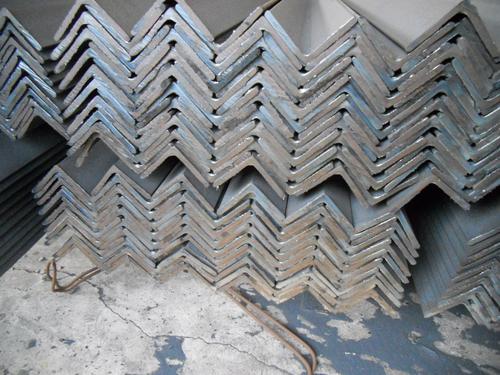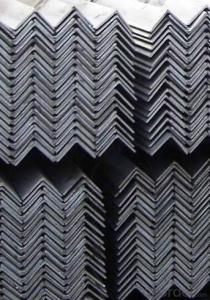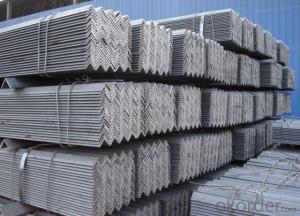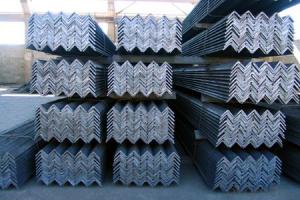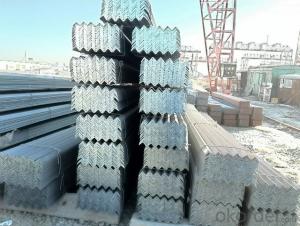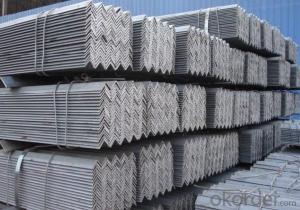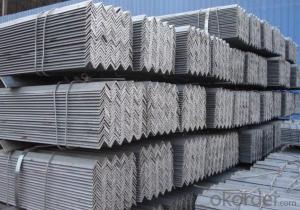High Quality Steel Angle Bar, Angle Steel from China
- Loading Port:
- China main port
- Payment Terms:
- TT or LC
- Min Order Qty:
- 50 m.t.
- Supply Capability:
- 100000 m.t./month
OKorder Service Pledge
OKorder Financial Service
You Might Also Like
Specifications of High Quality Steel Angle Bar, Angle Steel from China
1. Invoicing on theoretical weight or actual weight as customer request
2. Length: 6m, 9m, 12m as following table
3. Sizes
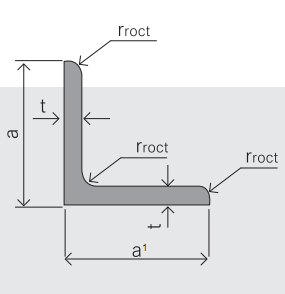
Sizes: 25mm-250mm | ||
a*t | ||
25*2.5-4.0 | 70*6.0-9.0 | 130*9.0-15 |
30*2.5-6.6 | 75*6.0-9.0 | 140*10-14 |
36*3.0-5.0 | 80*5.0-10 | 150*10-20 |
38*2.3-6.0 | 90*7.0-10 | 160*10-16 |
40*3.0-5.0 | 100*6.0-12 | 175*12-15 |
45*4.0-6.0 | 110*8.0-10 | 180*12-18 |
50*4.0-6.0 | 120*6.0-15 | 200*14-25 |
60*4.0-8.0 | 125*8.0-14 | 250*25 |
5. Payment terms:
1).100% irrevocable L/C at sight.
2).30% T/T prepaid and the balance against the copy of B/L.
3).30% T/T prepaid and the balance against L/C
Chemical Components of High Quality Steel Angle Bar, Angle Steel from China
Alloy No | Grade | Element (%) | |||||
C | Mn | S | P | Si | |||
|
|
|
|
|
|
| |
Q235 | B | 0.12—0.20 | 0.3—0.7 | ≤0.045 | ≤0.045 | ≤0.3 | |
|
|
|
|
|
|
| |
Alloy No | Grade | Yielding strength point( Mpa) | |||||
Thickness (mm) | |||||||
≤16 | >16--40 | >40--60 | >60--100 | ||||
≥ | |||||||
|
|
|
|
|
| ||
Q235 | B | 235 | 225 | 215 | 205 | ||
Alloy No | Grade | Tensile strength (Mpa) | Elongation after fracture (%) | ||||
Thickness (mm) | |||||||
| ≤16 | >16--40 | >40--60 | >60--100 | |||
≥ | |||||||
|
|
|
|
|
|
| |
Q235 | B | 375--500 | 26 | 25 | 24 | 23 | |
Usage & Applications of High Quality Steel Angle Bar, Angle Steel from China
According to the needs of different structures, Angle can compose to different force support component, and also can be the connections between components. It is widely used in various building structures and engineering structures such as roof beams, bridges, transmission towers, hoisting machinery and transport machinery, ships, industrial furnaces, reaction tower, container frame and warehouse etc.
Packaging & Delivery of High Quality Steel Angle Bar, Angle Steel from China
1. Packing: it is nude packed in bundles by steel wire rod
2. Bundle weight: not more than 3.5MT for bulk vessel; less than 3 MT for container load
3. Marks:
Color marking: There will be color marking on both end of the bundle for the cargo delivered by bulk vessel. That makes it easily to distinguish at the destination port.
Tag mark: there will be tag mark tied up on the bundles. The information usually including supplier logo and name, product name, made in China, shipping marks and other information request by the customer.
If loading by container the marking is not needed, but we will prepare it as customer request.
Production flow of High Quality Steel Angle Bar, Angle Steel from China
Material prepare (billet) —heat up—rough rolling—precision rolling—cooling—packing—storage and transportation
Pictures of High Quality Steel Angle Bar, Angle Steel from China
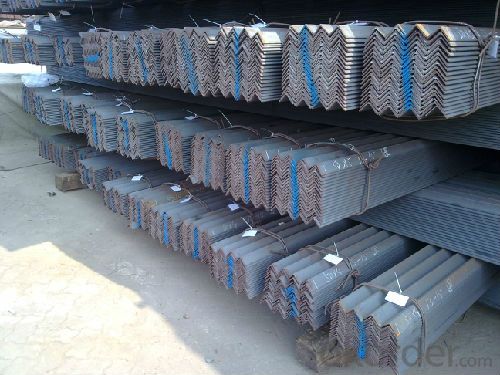
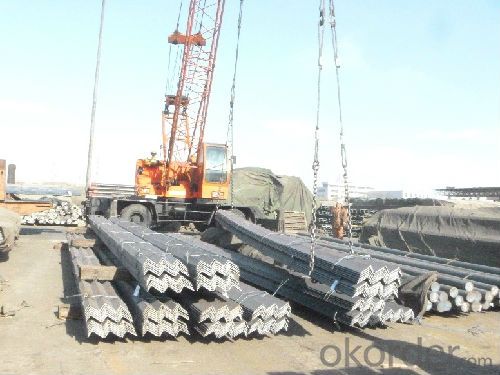
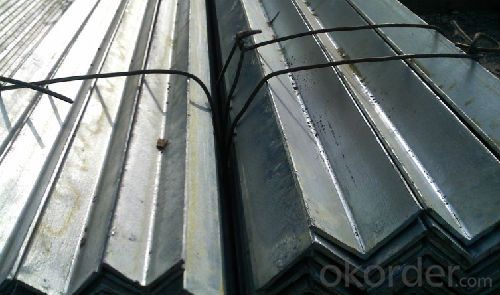
- Q: How do steel angles contribute to the overall lateral stability of a structure?
- Steel angles contribute to the overall lateral stability of a structure by providing structural support and resistance against horizontal forces or loads. These angles, when properly placed and connected, help to distribute these forces and prevent any excessive movement or deformation of the structure. They act as braces or reinforcements, increasing the overall rigidity and strength of the structure, thereby enhancing its ability to withstand lateral loads and maintain stability.
- Q: What are the different surface finishes for steel angles?
- Steel angles can be given various surface finishes to meet different aesthetic and functional requirements. Some commonly used finishes for steel angles include: 1. Mill Finish: Obtained straight from the mill without any treatment, this finish has a rough and dull appearance with visible imperfections and mill scale. 2. Hot-dip Galvanized: The steel angle is immersed in molten zinc, creating a protective coating that offers excellent corrosion resistance, ideal for outdoor and marine applications. 3. Powder Coated: A dry powder is applied to the steel angle and then cured with heat, resulting in a durable and smooth finish. This finish provides a wide range of color options and offers good corrosion resistance and aesthetics. 4. Painted: Different types of paint, such as enamel, epoxy, or acrylic, can be used to enhance the appearance of steel angles and provide some level of corrosion protection. 5. Stainless Steel: Steel angles made from stainless steel have a natural corrosion-resistant surface finish. They are commonly available in brushed or polished finishes, giving a clean and shiny appearance. 6. Galvannealed: This specialized finish involves galvanizing the steel angle and then heat treating it to create a matte, grayish finish. Galvannealed finish offers good corrosion resistance and paint adhesion, making it suitable for applications that require both. These are just a few examples of the available surface finishes for steel angles. The choice of finish will depend on factors such as the intended use, environment, and desired appearance of the steel angle.
- Q: Can steel angles be used in the construction of staircases?
- Yes, steel angles can be used in the construction of staircases. Steel angles provide structural support and stability, making them a suitable choice for building staircases.
- Q: What is the typical thickness of the flanges of a steel angle?
- The typical thickness of the flanges of a steel angle can vary depending on the specific application and industry standards. However, in general, the flanges of a steel angle are commonly found in thicknesses ranging from 1/8 inch to 3/4 inch. It is important to note that thicker flanges provide increased strength and stability, but also add to the weight and cost of the steel angle. The appropriate thickness of the flanges should be determined based on the specific requirements of the project and any applicable engineering or design standards.
- Q: Are steel angles suitable for historical restoration projects?
- Yes, steel angles can be suitable for historical restoration projects. They offer excellent strength and durability, which is useful for structural support and reinforcement. Additionally, steel angles can be easily fabricated to match the original design and can be finished to closely resemble the aesthetic of historical materials. However, careful consideration should be given to the specific project requirements and the preservation of historical integrity.
- Q: How do you calculate the section modulus of a steel angle?
- In order to determine the section modulus of a steel angle, one must possess knowledge regarding the dimensions and properties of the angle. The section modulus serves as a metric for measuring the strength of a structural member, enabling the evaluation of its ability to resist bending. The equation employed to compute the section modulus of a steel angle is as follows: Section Modulus (Z) = (Width of the angle * Height of the angle^2) / 6 Within this equation, the width of the angle denotes the distance between the two legs, whilst the height of the angle represents the length of a single leg. The section modulus is conventionally expressed in cubic inches or cubic centimeters. To compute the section modulus, one must initially measure the width and height of the angle. Subsequently, these measured values are substituted into the equation to ascertain the section modulus. This calculated figure provides an indication of the strength and rigidity of the steel angle, ultimately facilitating its application in structural design and analysis.
- Q: How do steel angles perform in terms of electromagnetic shielding?
- Steel angles have a reputation for being highly effective in terms of electromagnetic shielding. This is mainly because of their exceptional electrical conductivity and magnetic permeability. These particular qualities enable steel angles to efficiently redirect or absorb electromagnetic waves, resulting in a reduced impact on adjacent electronic devices or sensitive equipment. The shape and geometry of steel angles also play a role in their shielding capabilities, as they can be strategically positioned to create barriers or enclosures that obstruct or redirect electromagnetic fields. Additionally, the thickness or gauge of the steel angle can further amplify its shielding performance. In general, steel angles find widespread use in a variety of applications where minimizing or controlling electromagnetic interference is crucial, such as in the construction, telecommunications, electronics, and automotive industries.
- Q: Can steel angles be used in window frames?
- Indeed, window frames can incorporate steel angles. These steel angles find frequent application in construction, offering both structural reinforcement and stability to window frames. They often serve as reinforcements or brackets, connecting the window frame to the wall or other elements of the window system. Steel angles possess remarkable durability, strength, and resistance to corrosion, rendering them an excellent option for window frame construction. Moreover, steel angles can be effortlessly tailored and fabricated to suit various window sizes and designs.
- Q: Can steel angles support heavy loads?
- Steel angles have the ability to bear heavy loads. These L-shaped metal bars, known as steel angles, are frequently employed in construction and engineering for their sturdy and long-lasting nature. The unique design of steel angles enables them to evenly distribute weight, rendering them capable of enduring substantial loads. They are commonly utilized as structural supports and reinforcement in a variety of structures, including buildings, bridges, and machinery. Furthermore, engineers can tailor the dimensions and thickness of steel angles to meet precise load demands, making them a dependable option for supporting heavy loads.
- Q: What is the tensile strength of steel angles?
- The tensile strength of steel angles can vary depending on the specific grade and manufacturing process, but it is generally considered to be high.
Send your message to us
High Quality Steel Angle Bar, Angle Steel from China
- Loading Port:
- China main port
- Payment Terms:
- TT or LC
- Min Order Qty:
- 50 m.t.
- Supply Capability:
- 100000 m.t./month
OKorder Service Pledge
OKorder Financial Service
Similar products
Hot products
Hot Searches
Related keywords




